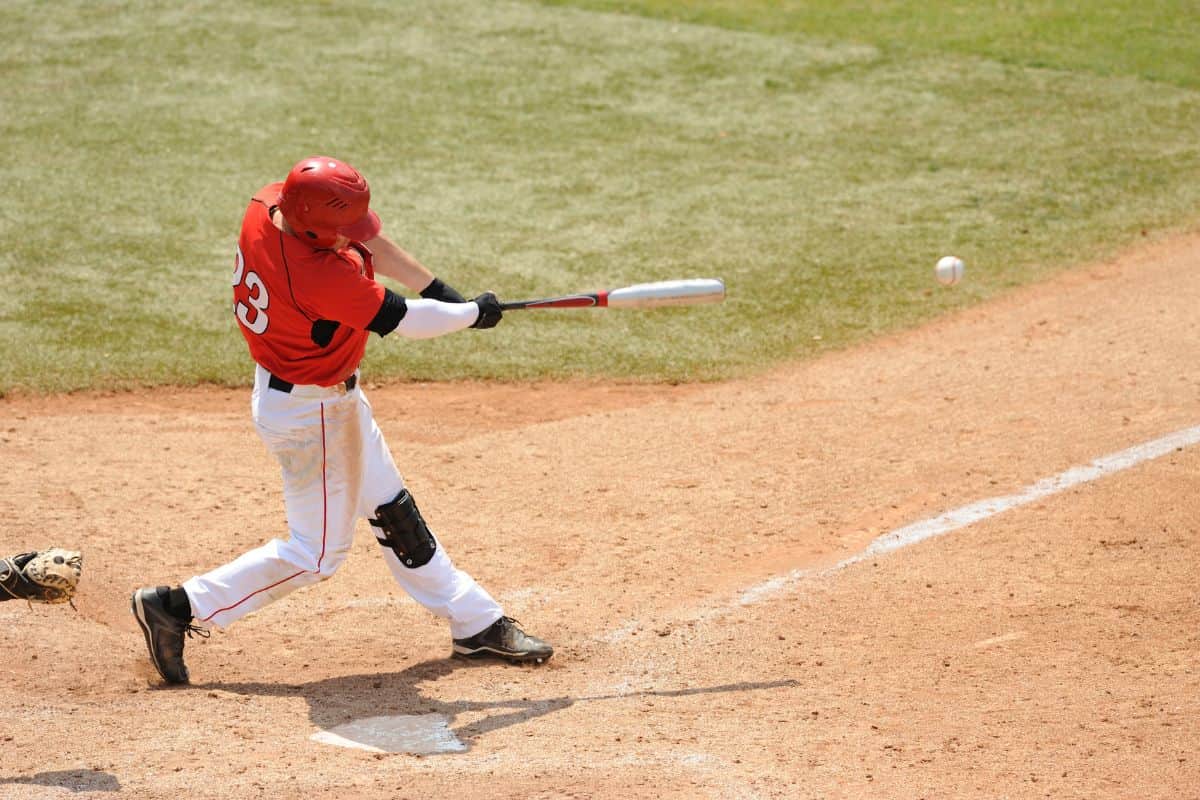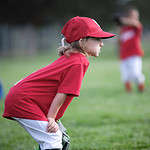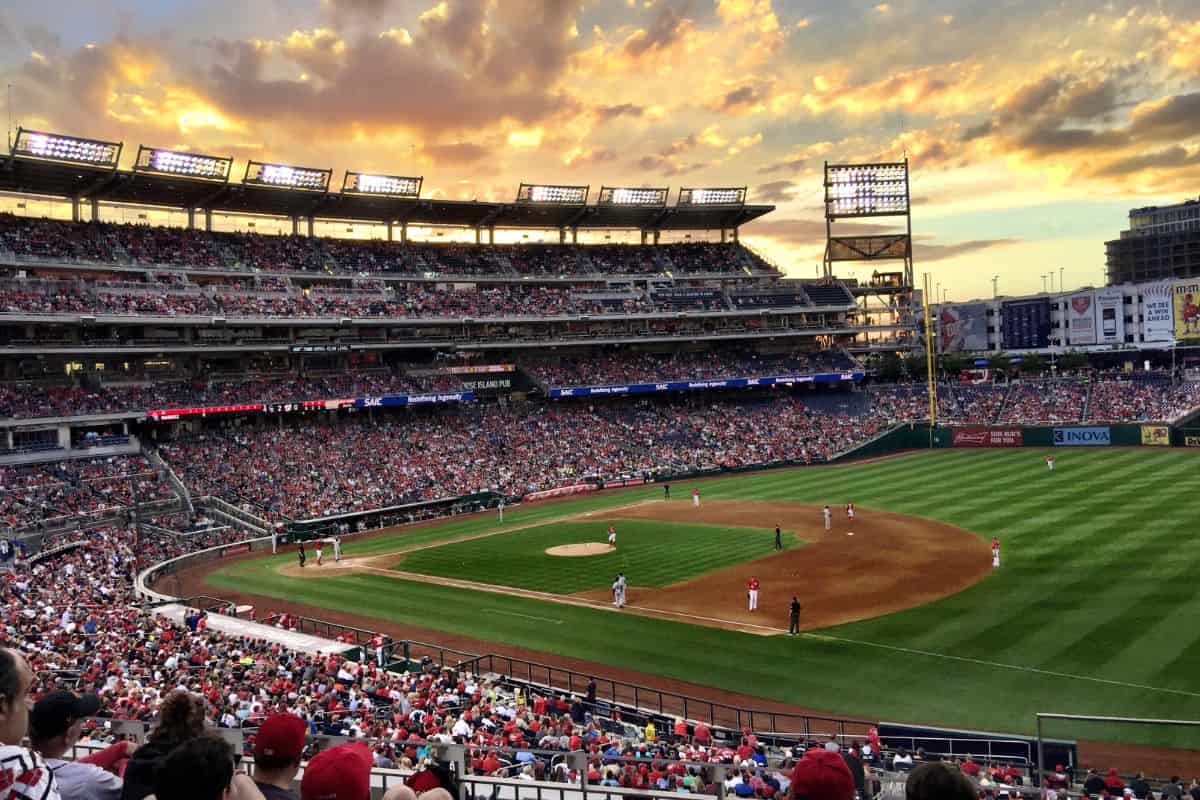Understanding Forced Out
In baseball, a forced out is a situation in which a runner is required to advance to the next base because the batter has become a runner. If the runner fails to advance, they can be tagged out by the fielding team.
A forced out can occur in many different scenarios. For example, if there is a runner on first base and the batter hits a ground ball to the infield, the fielder can throw the ball to second base, forcing out the runner who was originally on first. Another example is if there are runners on first and second base and the batter hits a fly ball to the outfield, the runners must wait to see if the ball is caught before advancing. If the ball is caught, the runners must return to their original bases, and if they fail to do so, they can be forced out.
It is important to note that a forced out is different from a tag out. In a tag out, the runner is not required to advance to the next base and can be tagged out at any time. In a forced out, the runner must advance to the next base and can only be tagged out if they fail to do so.

Overall, understanding the concept of a forced out is crucial for both players and fans of baseball. It is a fundamental part of the game and can greatly impact the outcome of a play or even a game.
Key Elements in Baseball Forced Out
Runner and Batter
In baseball, a forced out occurs when a runner is forced to advance to the next base, and the fielder with the ball touches the base before the runner reaches it. The runner is forced to advance because the batter has hit the ball and is running to first base.
Advance and Base
A runner must touch each base in order, and they cannot pass a preceding runner. If a runner fails to touch a base, they can be tagged out.
Ball and Out
A ball is a pitch that is outside the strike zone and not swung at by the batter. If the batter has not swung, and the ball is caught by the catcher, the batter is out.
Force and Force Play
A force play occurs when a runner is forced to advance to the next base, and the fielder with the ball touches the base before the runner reaches it. If the fielder with the ball touches the base before the runner, the runner is out.
Fielder and Defense
The defensive team tries to get the offensive team out by catching the ball and touching the appropriate base before the runner reaches it. The fielder with the ball can tag the runner with the ball, or touch the base before the runner reaches it.
In summary, a forced out occurs when a runner is forced to advance to the next base, and the fielder with the ball touches the base before the runner reaches it. It is an essential element in baseball, and understanding the rules and strategies surrounding it is crucial for both teams.
Bases in Baseball Forced Out
First Base
In baseball, a runner is considered forced out when they are required to advance to the next base because the batter has hit the ball in play. The first base is the first stop for a runner who has hit the ball. If the first base is occupied, the runner must continue to second base, and if the first base is unoccupied, the runner can occupy the base and is no longer considered forced out.
Second Base
If the runner successfully reaches first base and the batter hits the ball in play again, the runner must advance to second base, and the first base is no longer considered forced out. If the second base is occupied, the runner must continue to third base, and if the second base is unoccupied, the runner can occupy the base and is no longer considered forced out.
Third Base
The third base is the last stop before the home plate. If the runner successfully reaches second base and the batter hits the ball in play again, the runner must advance to third base, and the second base is no longer considered forced out. If the third base is occupied, the runner must continue to home plate, and if the third base is unoccupied, the runner can occupy the base and is no longer considered forced out.
Home Plate
The home plate is the final destination for a runner. If the runner successfully reaches third base and the batter hits the ball in play again, the runner must advance to home plate, and the third base is no longer considered forced out. If the home plate is occupied, the runner cannot occupy the base and is considered forced out.
In summary, a runner is considered forced out when they are required to advance to the next base because of the batter’s hit. The bases can be occupied or unoccupied, and the runner must continue to the next base until they reach the home plate. If a base is occupied, the runner must continue to the next base, and if the home plate is occupied, the runner is considered forced out.

Scenarios in Baseball Forced Out
Single Out Scenarios
A single out scenario occurs when a runner is forced to advance to the next base because of a batter’s hit. In this scenario, the fielder with possession of the ball tags the base before the runner reaches it. If the runner is tagged before reaching the base, they are out.
Double Play Scenarios
A double play scenario occurs when two outs are made on the same play. This can happen in a force out situation when a runner on first base is forced out at second base, and the batter is then thrown out at first base. The fielder must touch second base and then throw to first base to complete the double play.
Triple Play Scenarios
A triple play scenario occurs when three outs are made on the same play. This is a rare occurrence in baseball, but it can happen in a force out situation when there are runners on first and second base, and the batter hits a ground ball to the third baseman. The third baseman steps on third base to force out the runner from second base, then throws to second base to force out the runner from first base, and finally throws to first base to retire the batter.
Force Out Scenarios
A force out scenario occurs when a runner is forced to advance to the next base because of a batter’s hit. In this scenario, the fielder with possession of the ball only needs to touch the base before the runner arrives to force the runner out. If the runner fails to touch the base before the fielder, they are out.
In summary, understanding the different scenarios in baseball forced out is essential for players and fans alike. It is crucial to know the rules and regulations of the game to make informed decisions and appreciate the sport fully.
Roles in Baseball Forced Out
First Baseman
The first baseman is responsible for playing near the first base and catching balls thrown by the other players. They also cover first base during plays and tag runners who are trying to reach the base. In a forced out situation, the first baseman must be alert and quick to catch the ball and tag the runner before they reach the base.
Second Baseman
The second baseman is responsible for playing near the second base and catching balls thrown by the other players. They also cover second base during plays and tag runners who are trying to reach the base. In a forced out situation, the second baseman must be alert and quick to catch the ball and tag the runner before they reach the base.
Third Baseman
The third baseman is responsible for playing near the third base and catching balls thrown by the other players. They also cover third base during plays and tag runners who are trying to reach the base. In a forced out situation, the third baseman must be alert and quick to catch the ball and tag the runner before they reach the base.
Catcher
The catcher is responsible for catching balls thrown by the pitcher and preventing runners from stealing bases. In a forced out situation, the catcher must be alert and quick to catch the ball and tag the runner before they reach the base.
Pitcher
The pitcher is responsible for throwing the ball to the other players and preventing the opposing team from scoring. In a forced out situation, the pitcher must be aware of the runners on base and make accurate throws to the other players to force the runner out.
Infielder
The infielder is responsible for playing in the infield and catching balls thrown by the other players. They also cover the bases during plays and tag runners who are trying to reach the base. In a forced out situation, the infielder must be alert and quick to catch the ball and tag the runner before they reach the base.
Overall, each position in baseball plays a crucial role in forced out situations. It is important for each player to be alert, quick, and accurate in order to execute a successful forced out.
Scoring in Baseball Forced Out
In baseball, a forced out occurs when a runner is forced to advance to the next base because the batter became a runner. When a fielder with possession of the ball touches the base before the runner arrives, the runner is out.
Scoring on a force out can happen in several ways. If the runner on third base is forced to advance home because the batter hit a ground ball, the runner can score a run if the ball is fielded and thrown to first base for the out before the runner arrives. In this scenario, the run is credited to the batter who hit the ball.
Another way to score on a force out is when there are runners on first and second base, and the batter hits a ground ball to the shortstop. The shortstop touches second base to force out the runner advancing from second and then throws to first base to force out the batter. In this case, the runner on third base can score if they cross home plate before the batter is forced out at first base. The run is credited to the runner who crossed home plate.
It is important to note that a runner cannot be forced out if there are fewer than two outs and the batter hits a fly ball that is caught by a fielder. In this situation, the runner must tag up, or touch the base they were on before the ball was caught, before attempting to advance to the next base. If the runner does not tag up and is thrown out before returning to the base, it is considered a double play and no runs can be scored.
Overall, scoring on a force out can be a strategic way for teams to score runs in baseball. Understanding the rules and scenarios in which a runner can score on a force out is crucial for both players and fans alike.
Key Terms in Baseball Forced Out
Tag and Tag Out
In baseball, a tag refers to the act of a defensive player touching a baserunner with the ball or their glove while the baserunner is not touching a base. A tag out occurs when the baserunner is tagged with the ball or glove before they can reach a base. This is a common way for defensive players to force an out.
Hit and Strike Out
A hit occurs when the batter successfully hits the ball and it lands in fair territory, allowing them to run to first base. A strikeout occurs when the batter swings at and misses three pitches, or when the pitcher throws three strikes that are called by the umpire.
Round and Inning
A round refers to the act of each team having a turn to bat and play defense. An inning is completed when both teams have had a chance to bat and play defense once.
Throw and Catch
In baseball, throwing and catching are essential skills for both offense and defense. A throw refers to the act of a player throwing the ball to another player. A catch refers to the act of a player successfully catching the ball thrown by another player.
Possession and Safe
Possession of the ball refers to which team has control of the ball at any given time. A player is considered safe when they reach a base before the ball is caught by a defensive player or before they are tagged out.
Tagging and Tagged Out
Tagging refers to the act of a defensive player touching a baserunner with the ball or their glove while the baserunner is not touching a base. A baserunner is considered tagged out when they are touched by the ball or glove before they can reach a base.
Overall, understanding these key terms is essential for anyone looking to understand the intricacies of baseball forced out.
Understanding Base Runners in Baseball Forced Out
In baseball, a force out is a play that occurs when a baserunner is forced to advance to the next base because the batter has become a runner. The defensive team can then get the baserunner out by touching the base to which the runner is forced to advance before the runner can reach it. Understanding base runners in baseball forced out is crucial for both players and fans of the game.
When a baserunner is forced out, the following runner must then take the previous runner’s place on the base. This is known as the lead runner. The lead runner is the runner who is closest to home plate among all of the runners on base. The following runner is the runner who is behind the lead runner.
To better understand how force outs work, let’s consider the following scenario: there are runners on first and second base, and the batter hits a ground ball to the shortstop. The shortstop fields the ball and touches second base before the runner from first base can reach it. The runner from second base is now the lead runner, and the runner from first base is the following runner. The shortstop can then throw the ball to first base to get the batter out.
It’s important to note that when a baserunner is forced out, they do not have to be tagged with the ball. Instead, the defensive player can simply touch the base to which the runner is forced to advance before the runner can reach it. This makes force outs a quick and efficient way for the defense to get outs.
In conclusion, understanding base runners in baseball forced out is essential for both players and fans of the game. Knowing the roles of the lead runner and following runner can help players make better decisions on the field, while fans can better appreciate the strategy and excitement of the game.
Miscellaneous Aspects in Baseball Forced Out
When it comes to baseball, the forced out is a crucial aspect of the game. Here are some miscellaneous aspects to keep in mind:
- Ground ball: A ground ball is a ball that is hit along the ground. If a fielder catches a ground ball and steps on the base before the runner reaches it, the runner is forced out.
- Tag up: If a runner is on base and a caught fly ball is hit, the runner must “tag up” by returning to their base before attempting to advance. If the runner fails to tag up and the ball is caught, they can be forced out.
- Caught fly ball: If a fielder catches a fly ball, the runner who was on base at the time must return to their base before attempting to advance. If the runner fails to do so and the ball is thrown to the base before they return, they can be forced out.
- Three outs: A team has three outs per inning. Once they reach three outs, their turn at bat is over.
- Live ball: A ball is considered “live” until the umpire calls “time.” This means that a runner can be forced out at any time, even if they are not currently running.
- Batters: Batters can be forced out if they hit the ball and are thrown out at first base before reaching it.
- Option: If a fielder has the option to tag a runner or touch the base, they can choose either option to force the runner out.
- Hand and glove: A runner can be forced out if the fielder touches the base with their hand or glove while holding the ball.
- Opponent confusion: If an opponent is confused about the number of outs or the situation on the field, they can be forced out if they leave their base prematurely.
Overall, understanding the various aspects of the forced out is crucial for players and fans alike. By keeping these rules in mind, everyone can enjoy a fair and exciting game of baseball.
Frequently Asked Questions
What is a force out in baseball?
A force out is a type of out that occurs when a defensive player with the ball touches a base before the runner reaches it. The runner is then forced to advance to the next base, and if they are tagged out before reaching it, they are called out.
What is an example of a force out?
An example of a force out is when a runner is on first base and the batter hits a ground ball to the shortstop. The shortstop fields the ball and touches second base before the runner gets there, forcing the runner to advance to second base. If the second baseman then throws the ball to first base and the first baseman catches it before the batter gets there, the batter is out on a force play.
What is the difference between tag out and force out?
The main difference between a tag out and a force out is that a tag out occurs when a defensive player tags a runner with the ball, while a force out occurs when a defensive player touches a base before the runner reaches it. In a force out, the runner is forced to advance to the next base, while in a tag out, the runner is not forced to advance.
What is the force out rule?
The force out rule states that a runner is required to advance to the next base if a defensive player with the ball touches the base before the runner reaches it. If the runner fails to advance and is tagged out before returning to the previous base, they are called out.
Where are the force plays if the bases are loaded?
If the bases are loaded, force plays can occur at any base. The defensive player can touch any base to force out the runner, as long as the runner is forced to advance to the next base.
If a runner is on first base and the ball is hit, where can you throw the ball to get a force out?
If a runner is on first base and the ball is hit, the defensive player can throw the ball to second base to get a force out. As long as the defensive player touches second base before the runner gets there, the runner is forced to advance to second base, and if the second baseman then throws the ball to first base and the first baseman catches it before the batter gets there, the batter is out on a force play.
- UCLA Softball: Let’s Go Bruins! - February 12, 2024
- Youth Softball Helmet Buying Guide: Keep ‘Em Safe - February 12, 2024
- Youth Softball Pants: Our Top Picks for Your Top Player - February 12, 2024








